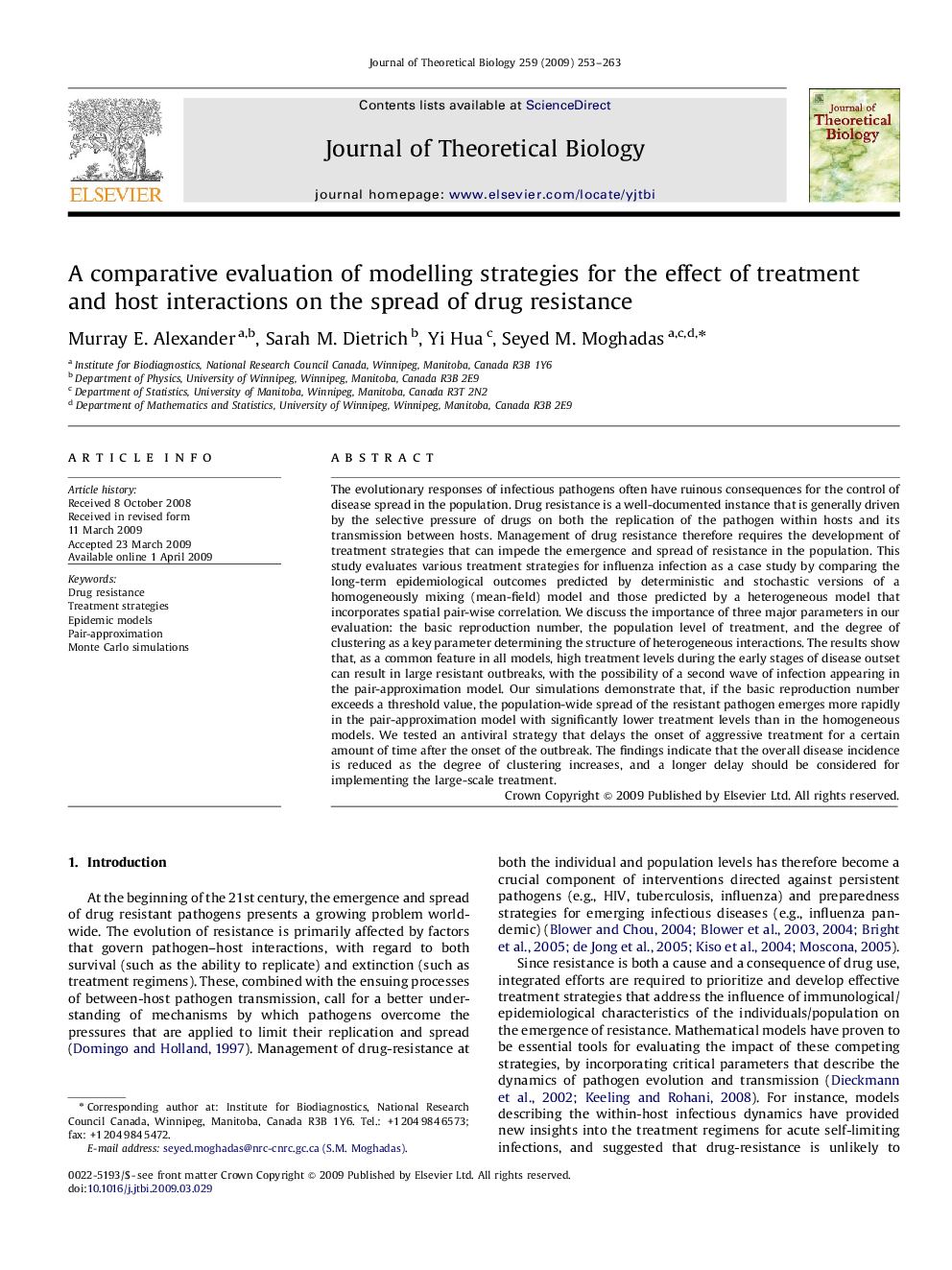| کد مقاله | کد نشریه | سال انتشار | مقاله انگلیسی | نسخه تمام متن |
|---|---|---|---|---|
| 4498131 | 1318966 | 2009 | 11 صفحه PDF | دانلود رایگان |
عنوان انگلیسی مقاله ISI
A comparative evaluation of modelling strategies for the effect of treatment and host interactions on the spread of drug resistance
دانلود مقاله + سفارش ترجمه
دانلود مقاله ISI انگلیسی
رایگان برای ایرانیان
کلمات کلیدی
موضوعات مرتبط
علوم زیستی و بیوفناوری
علوم کشاورزی و بیولوژیک
علوم کشاورزی و بیولوژیک (عمومی)
پیش نمایش صفحه اول مقاله

چکیده انگلیسی
The evolutionary responses of infectious pathogens often have ruinous consequences for the control of disease spread in the population. Drug resistance is a well-documented instance that is generally driven by the selective pressure of drugs on both the replication of the pathogen within hosts and its transmission between hosts. Management of drug resistance therefore requires the development of treatment strategies that can impede the emergence and spread of resistance in the population. This study evaluates various treatment strategies for influenza infection as a case study by comparing the long-term epidemiological outcomes predicted by deterministic and stochastic versions of a homogeneously mixing (mean-field) model and those predicted by a heterogeneous model that incorporates spatial pair-wise correlation. We discuss the importance of three major parameters in our evaluation: the basic reproduction number, the population level of treatment, and the degree of clustering as a key parameter determining the structure of heterogeneous interactions. The results show that, as a common feature in all models, high treatment levels during the early stages of disease outset can result in large resistant outbreaks, with the possibility of a second wave of infection appearing in the pair-approximation model. Our simulations demonstrate that, if the basic reproduction number exceeds a threshold value, the population-wide spread of the resistant pathogen emerges more rapidly in the pair-approximation model with significantly lower treatment levels than in the homogeneous models. We tested an antiviral strategy that delays the onset of aggressive treatment for a certain amount of time after the onset of the outbreak. The findings indicate that the overall disease incidence is reduced as the degree of clustering increases, and a longer delay should be considered for implementing the large-scale treatment.
ناشر
Database: Elsevier - ScienceDirect (ساینس دایرکت)
Journal: Journal of Theoretical Biology - Volume 259, Issue 2, 21 July 2009, Pages 253-263
Journal: Journal of Theoretical Biology - Volume 259, Issue 2, 21 July 2009, Pages 253-263
نویسندگان
Murray E. Alexander, Sarah M. Dietrich, Yi Hua, Seyed M. Moghadas,